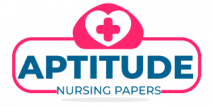NU623 Adult Healthcare Unit 13 Assignment SOAP Note Clinical Documentation Consider constructing a Word document ‘SOAP note template’ and use it to assemble your note. By doing this you can use the template for efficiently constructing your SOAP notes such that you will be able to copy-and-paste for your weekly assignments. NOTE: If your faculty person requests to see your SOAP note template you will be required to send it to them for review. All sections of the SOAP note should be addressed relevant to the presenting chief complaint. Subjective (S):CC: chief complaint – What are they being seen for? This is the reason that the patient sought care, stated in their own words/words of their caregiver, or paraphrased. HPI: history of present illness – use the “OLDCART” approach for collecting data and documenting findings. [O=onset, L=location, D=duration, C=characteristics, A=associated/aggravating factors, R=relieving factors, T=treatment, S=summary]PMH: past medical history – This should include past illness/diagnosis, conditions, traumas, hospitalizations, and surgical history. Include dates if possible. Allergies: State the offending medication/food and the reactions. Medications: Names, dosages, and routes of administration. Social history: Related to the problem, educational level/literacy, smoking, alcohol, drugs, HIV risk, sexually active, caffeine, work and other stressors. Cultural and spiritual beliefs that impact health and illness. Financial resources. Family history: Use terms like maternal, paternal and the diseases and the ages they were deceased or diagnosed if known. Health Maintenance/Promotion – Required for all SOAP notes: Immunizations, exercise, diet, etc. Remember to use the United States Clinical Preventative Services Task Force (USPSTF) guidelines for age appropriate indicators. This should reflect what the patient is presently doing regarding the guidelines. ROS: review of systems – [Refer to your course modules and the Bickley Etext (Bates Guide) as a guide when conducting your ROS to make sure you have not missed any important symptoms, particularly in areas that you have not already thoroughly explored while discussing the history of present illness.]You would also want to include any pertinent negatives or positives that would help with your differential diagnosis. For acute episodic (focused) visits (i.e. sprained ankle, sore throat, etc.)you may be omitting certain areas such as GYN, Rectal, GI/Abd, etc. While the list below is provided for your convenience it is not to be considered all-encompassing and you are expected to include other systems/categories applicable to your patient’s chief complaint. General: May include if patient has had a fever, chills, fatigue, malaise, etc. Skin: HEENT: head, eyes, ears, nose and throat Neck: CV: cardiovascular Lungs: GI: gastrointestinal GU: genito-urinary PV: peripheral vascular MSK: musculoskeletal Neuro: neurological Endo: endocrine Psych: Objective (O):PE: physical exam – [Refer to your course modules and the Bickley Etext (Bates Guide) as a guide when determining what physical assessments, you want to include to further explore what you have learned from your subjective data collection] Perform either a focused exam or comprehensive exam to ensure a comprehensive physical assessment. This area should confirm your findings related to the diagnosis. For acute episodic (focused) visits (i.e. sprained ankle, sore throat, etc.) you may be omitting certain areas such as GYN, Rectal, Abd, etc. All SOAP notes however should have physical examination of CV and lungs. Ensure that you include appropriate male and female specific physical assessments when applicable to the encounter. Your physical exam information should be organized using the same body system format as the ROS section. Appropriate medical terminology describing the objective examination is mandatory. While the list below is provided for your convenience it is not to be considered allen compassing and you are expected to include other systems/assessments applicable to your patient’s chief complaint. Gen: general statement of appearance, if there is any acute distress. VS: vital signs, height and weight, BMISkin: HEENT: head, eyes, ears, nose and throatNeck: CV: cardiovascular Lungs:Abd: abdomen GU: genito-urinary PV: peripheral vascular MSK: musculoskeletal Neuro: neurological examDiagnostic Tests: This area is for tests that were completed during the patient’s appointment that ruled the differential diagnosis in or out (e.g. – Rapid Strep Test, CXR, etc.).Assessment (A):Diagnosis/Diagnoses: Start with the presenting chief complaint diagnosis first. Number each diagnosis.A statement of current condition and all other chronic illnesses that were addressed during the visit must be included (i.e. HTN-well managed on medication).Remember the data you provide in the ‘S’ data set and the ‘O’ data set must support this diagnosis (or these diagnoses if more than one is listed). Pertinent positives and negatives must be found in the write-up.Plan (P):These are the interventions that relate to each individual, numbered diagnosis. Document individual plans directly after each corresponding assessment (Ex. Assessment Plan). Address the following aspects (they should be separated out as listed below):Diagnostics: labs, diagnostics testing – tests that you planned for/ordered during the encounter that you plan to review/evaluate relative to your work up for the patient’s chief complaint. Therapeutic: changes in meds, skin care, counseling, include full prescribing information for any pharmacologic interventions including quantity and number of refills for any new or refilled medications. Educational: information clients need in order to address their health problems. Include follow up care. Anticipatory guidance and counseling. Consultation/Collaboration: referrals, or consult while in clinic with another provider. If no referral made was there a possible referral you could make and why? Advance care planning. NOTE: please input N/A where appropriate for the above 4 categories, do not assume that your clinical faculty person will know it was not applicable Purchase this Tutorial. https://aptitudenursingpapers.com/
